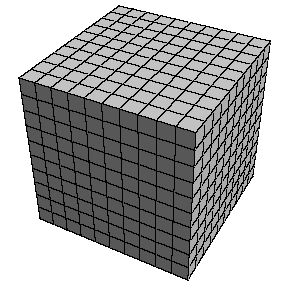
Tuesday:
This mathematician was one of the founders of computer science. During
World War II, he was instrumental in breaking the German "Enigma" code.
Who was he? Please give both his first and last name.
Answer: Alan Turing
Wednesday:
A prime number is a whole number bigger than one that cannot be written as
the product of two smaller whole numbers. For example, 15 is not prime
since 15 is equal to 5 times 3. On the other hand, 11 is prime since it
can only be factored as 1 times 11. What is the smallest prime number
that ends with the digits: two, zero, zero, one?
Answer: 102001
Thursday:
A perfect square is a number that is the product of a whole number with
itself. For example, 9 which is equal to 3 times 3 is a perfect square. A
triangular number is one that is the sum of consecutive integers beginning
with 1. For example, 6 = 1 + 2 + 3 is a triangular number. Note that 36
is both a perfect square (36 = 6×6) and a triangular number (36 = 1 +
2 + 3 + 4 + 5 + 6 + 7 + 8). What is the next number that is simultaneously
a perfect square and a triangular number?
Answer: 1225 = 352 = 1 + 2 + 3 + ... + 49
Friday: A 10 inch cube (i.e. one whose dimensions are 10 inches by 10 inches by 10 inches) is divided into one inch cubes as shown in the figure. The surface of the larger cube is painted black. How many of the smaller cubes have none of their faces painted? How many have one face painted? Two? Three?
